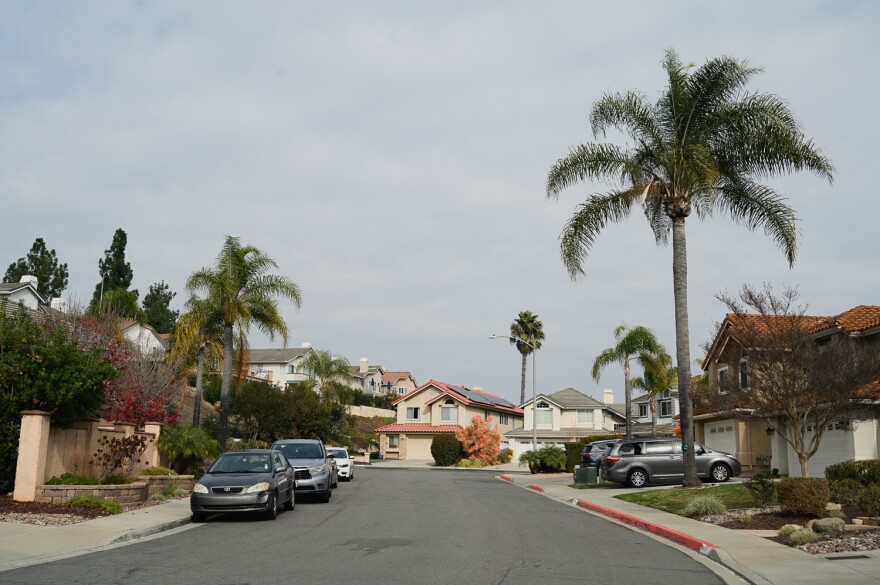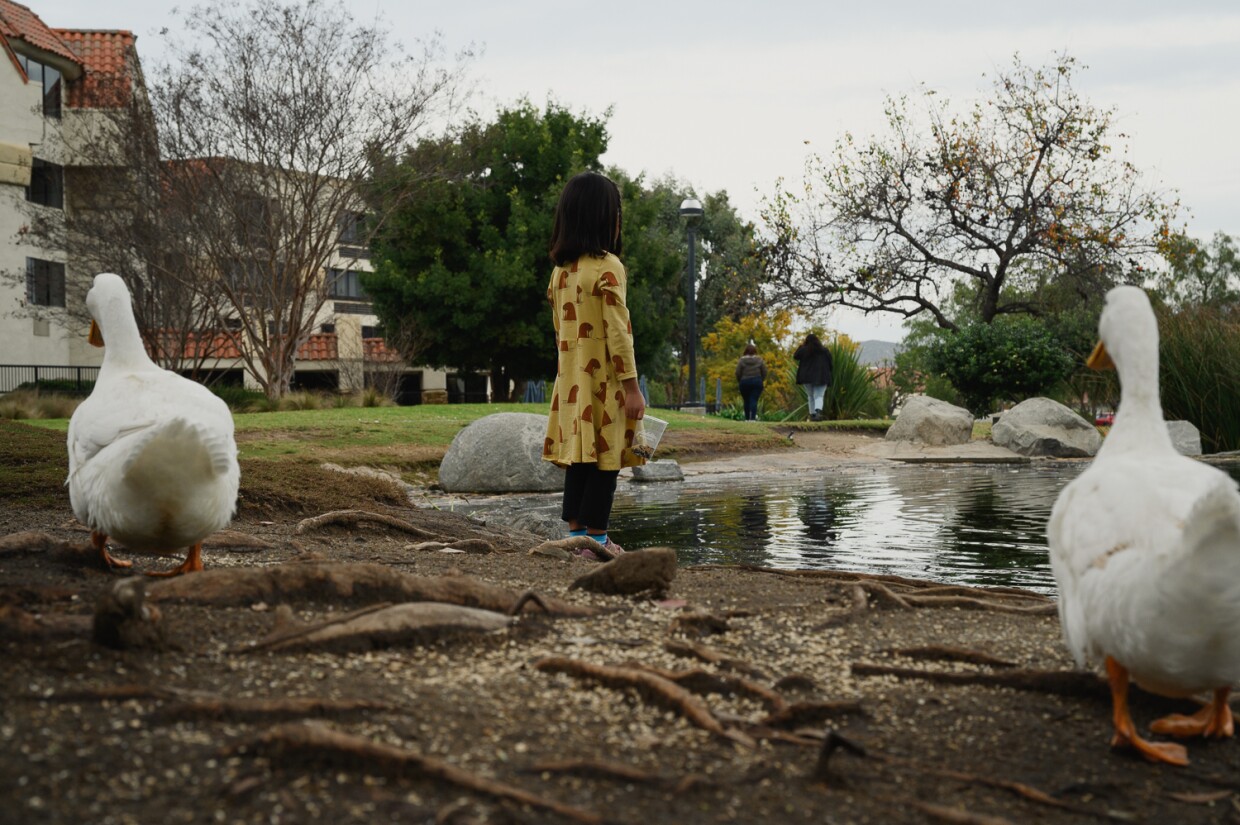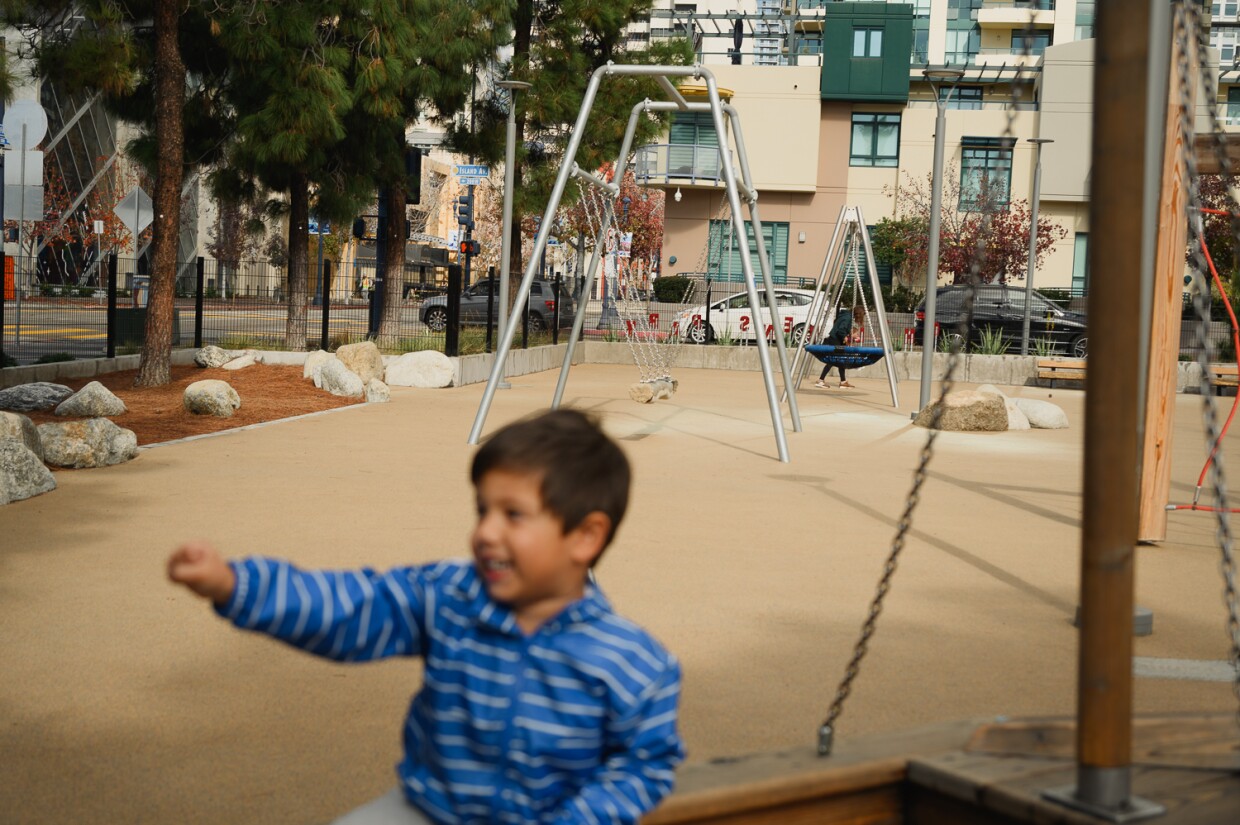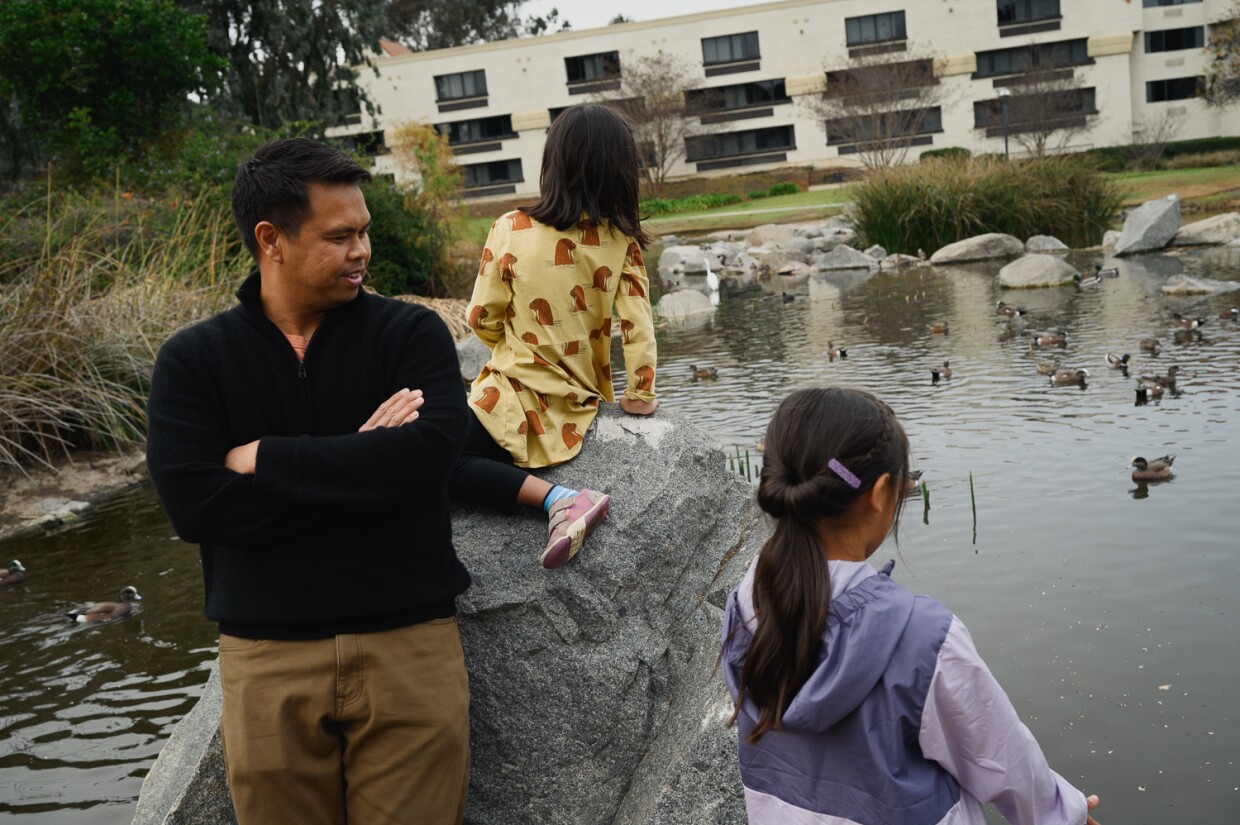Editor's note: This is part one of a two-part series. Read part two here. Please note that this story includes mentions of suicide.
Sometimes, Dennis Lim’s street is a little too quiet.
Growing up in Oceanside, Lim remembers his neighborhood cul-de-sac bursting with life. Most afternoons, his parents would raise the door to their garage and set Lim loose to play freely with little supervision. He and his friends would perch on the nearby utility box in a neighbor’s yard and gossip, or play baseball in the street, filling the air with noise.
Decades later, Lim is a parent with two elementary school-age kids of his own. He lives at the end of another cul-de-sac, this time in a residential neighborhood in northern San Diego — a perfect place for a good game of street baseball.
But most days, his block is silent.
“There just aren't any kids outside,” Lim said on a recent morning. “I could stand outside my house for two hours and I would not see a single kid.”
Lim isn’t alone in noticing this change. Across the country, researchers who study childhood say the way kids play has quietly transformed over the past three decades. The freewheeling, untethered days of earlier generations have been replaced by organized activities and afterschool programs. Play time has become supervised and monitored.
To some, these changes have meant kids are safer from accidents and abductions and are also making better use of their time through schoolwork, sports teams and other organized activities.
But more experts who study childhood are raising concerns about this change. They worry the loss of that free, unstructured time in kids’ lives may be taking an unintended toll on the mental health of younger generations, leaving many kids with fewer social skills and a weakened sense of agency — adding to the youth mental health crisis.
That worries parents like Lim.
“It's not just all about having fun and playing,” he said. “There's really some skills that kids learn when they're outside and playing.”


What happened to play?
Free or unstructured play is time where kids get to choose what they want to do and exercise their creativity away from the constraints of adult supervision. That’s instead of structured activities like an organized sports team or a gymnastics class.
The decline of free play stems largely from three major shifts in American life beginning around the 1980s, according to researchers.
The first was a series of high-profile kidnappings of young children. In 1979, a 6-year-old boy named Etan Patz went missing in New York. Two years later, Adam Walsh, also 6 years old, was abducted and murdered in Florida. In 1989, 11-year-old Jacob Wetterling was abducted in Minnesota, launching one of the largest searches for a missing person to date.
Child abductions were — and remain — very rare. Less than 350 people under age 21 are kidnapped every year on average in the United States, according to FBI data.
Still, news of the cases created a public uproar. Dairy companies launched a massive public awareness campaign, printing the faces of missing children on milk cartons. Picture book characters warned kids about talking to strangers. The National Center for Missing and Exploited Children was founded.
All of this, experts argue, had a profound effect on parenting.
“The messages began to be, ‘If you're not watching your kids or you don't know where they are, if there's not some other responsible adult watching them, then you are a negligent parent,’” said Peter Gray, a research professor of psychology and neuroscience at Boston College. “They didn't put it in those terms exactly, but that was the implication.”

The second major shift in American life was a federal push to reshape schooling with a greater focus on academics. That push centered around a landmark government report on American schools. The report, produced in 1983 by a commission inside President Ronald Reagan’s administration, warned that American education was not keeping pace with other countries.
“The educational foundations of our society are presently being eroded by a rising tide of mediocrity that threatens our very future as a nation and as a people,” the authors wrote.
Lawmakers reacted. In 2001, Congress passed the No Child Left Behind Act, a sweeping law that increased government oversight across the education system. It required public schools and educators to prove success and academic growth through standardized test scores. Otherwise, schools faced losing federal funding and other penalties.
In response, academics began to creep further into the lives of kids and teens. Teachers gave out more homework. Kindergarteners had less time to play in class. The average length of the school year increased by several weeks.
“The nature of school changed very dramatically,” Gray said.
The final shift that Gray points to was Reagan’s approach to the economy. The federal government cut back taxes for big businesses and the American upper class. The divide between poor and wealthy people grew, making it harder for working-class families to stay out of poverty.
In turn, Gray argues, working-class families began to focus less on play and more on educational achievement.
“College education, which previously was regarded as kind of optional, became in many people's minds a necessity,” he said. “That meant you had to push your kid to do well enough in school to get into college.”
Over the decades, these three shifts reshaped the lives of American youth. Unstructured play fell by close to 25% between 1981 and 1997, according to some estimates.

The other decline
At the same time, something else has been in decline: young peoples’ happiness.
Young Americans are consistently reporting higher rates of anxiety, depression and thoughts of suicide. In 2019, one in three high school students said they had persistent feelings of sadness or hopelessness — up 40% from a decade earlier.
Thousands of the nation’s leading pediatric health experts have declared a “national emergency” around youth mental health struggles. Public health experts have scrambled to find the cause, often leveling blame at smartphones and social media.
If You Need Help
If you or someone you know is experiencing thoughts of suicide, help is available 24 hours a day. Call or text the Suicide & Crisis Lifeline at 988, or go here for online chat.
For more help:
- Find 5 Action Steps for helping someone who may be suicidal, from the National Suicide Prevention Lifeline.
- Six questions to ask to help assess the severity of someone's suicide risk, from the Columbia Lighthouse Project.
- To prevent a future crisis, here's how to help someone make a safety plan.
But according to Gray and others, we should also be paying closer attention to the changing way kids play.
Free play has lasting benefits. It gives children a chance to practice working together, resolving disagreements and exercising their creative skills free from adult supervision. It also helps kids build an internal sense that they have control over the course of their lives, which research shows lessens the risk of anxiety and depression.
“It's not just about the play, it's about the interaction that happens through the play,” said Rebecca London, a professor of sociology at UC Santa Cruz. “That interaction is an incredibly important part of child development.”
For example, London said, think of kids trying to decide whether the ball landed in or out during a game. They could spend 10 minutes arguing over what happened, or they could use rock-paper-scissors to reach a quick solution and play on. That’s in contrast to a coach or another adult stepping in to decide what should happen.
As more recent generations have lost that unstructured time and freedom, Gray said they have also lost chances to build that internal sense of agency, which leaves them more vulnerable to sadness, worry and hopelessness.
“If anything can happen at any time and there's nothing I can do about it, that's a scary world,” he said.
Play is just one of many factors affecting kids’ mental health. But Gray and London said it is one area where parents have some power over the situation. Parents can teach kids how to be safe during independent activities, demonstrating how to cross the street and ride a bike, and that it can be safer to travel in groups with friends or siblings, Gray said.
There are some larger efforts underway to bring more free play back into the lives of kids. In California, lawmakers are taking steps to make sure public school students have daily, unstructured recess time. Groups of parents across the country are also working to create play-friendly neighborhoods.


On a recent afternoon, Lim, who lives on that too-quiet cul-de-sac, roamed the park with his two daughters. He kept a watchful eye, but occasionally, they would roam off, skipping across to the other side of the pond to feed the ducks.
Lim thinks another solution could be adding more parks like this, and other places where families can gather.
“That could go a long ways,” he said. “It really needs to be more than just one parent doing this, because my kids playing outside isn't going to make the other kids come outside.”
If you or someone you know may be considering suicide, contact the Suicide and Crisis Lifeline by calling 988 or the Crisis Text Line by texting SAVE to 741-741. Both resources are free, confidential and available 24/7.






